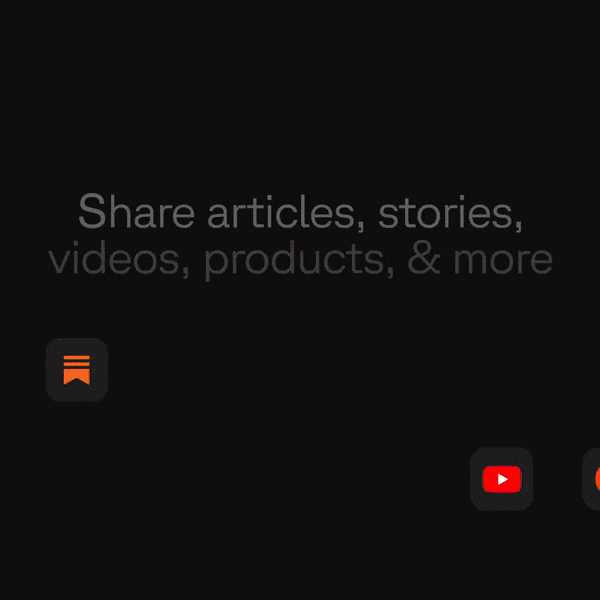What led you into design?
I was surrounded by art and design at a young age in my family. My uncle was an artist and graphic designer, my grandmother an artist, and my grandfather wrote poetry. They all played a significant role in shaping my creative outlook.
Growing up skating and snowboarding, I was always attracted to the art and design of various brands. During this time, I was also introduced to software and creation tools. My friends and I would film and make edits for fun. I loved the process of filming and orchestrating clips together to music; it opened up a new medium of expression and creation.
I didn't go to a traditional university because I wasn't sure what I wanted to do, but I knew I liked the arts and creative fields. I took some photography and design classes at a tech school where I was introduced to graphic design as a profession. Since I had no experience, I started working at a print production company to get my foot in the door while studying graphic design. After a couple of years, I built up a portfolio of personal projects and landed my first job at an agency. From there, I transitioned into web and product design.
It felt like a natural evolution into design — blending early creative influences with playful exploration of software and tools. Every part of my journey is still relevant today combining visual design, motion, and 3D within my work.
What does a typical day look like?
My days are a little different now because I'm a new Dad! I start my days pretty early, I love having personal time and quiet mornings to workout, get some extra focus time on work or personal projects, and be with my little one. During my workdays I try to get a fair amount of heads-down time outside of meetings and ad-hoc syncs, so I'm mostly deep in the work designing all day. Design feels just as much a hobby as it is a job for me, and a lot of my time is spent creating, building, and exploring new things that inspire me.
What's your workstation setup?
Where do you go to get inspired?
My team, other designers and builders in the community, studios, museums.
What product have you recently seen that made you think this is great design?
I'm a fan of the Knob1 keyboard design by Ben Fry. I've been following along as he has been developing it in public and appreciate the attention to detail, unique keycap design, and alternative functionality with the customizable knobs and mini screen. A perfect example of blending aesthetics + functionality.


What pieces of work are you most proud of?
Overall, I'm most proud of work where I am able to flex multiple disciplines between product design, motion, and brand.
Artifact
Before Perplexity, I joined Artifact as a founding designer where I had the privilege to work with Kevin Systrom and Mike Krieger, Instagram's co-founders, on an AI-powered discovery engine for personalized news, links, and user generated content. I'm super proud of all the work we shipped and how we brought the product to market. The app was awarded Generative AI trend of the year by Apple, Every Day Essentials by Google Play, and recently acquired by Yahoo.




What design challenges do you face at your company?
Designing for AI involves a multifaceted approach that addresses technical complexities, ethical considerations, and practical human needs. Each come with many sets of challenges, but embracing them can create systems that are not only powerful and efficient but also result in novel interactions, new paradigms, and trustworthy products.
What music do you listen to while designing?
Any advice for ambitious designers?
Always be evolving your taste. Our industry can always use more tastemakers, especially in the age of AI. Developing your taste is about getting your hands dirty in the work to really understand it. Noticing the good, the not-so-good, and everything in between. Dig into why something makes you feel a certain way. It's this mix of curiosity and exploration that hones your aesthetic sense and develops your taste. Open yourself up to a wide variety of work, keep exploring, keep questioning, and let your taste evolve with every new experience.
Develop an internal dialogue. It's easy to get attached to your work. But true growth comes from being willing to critique and challenge yourself. Develop a habit of engaging in an internal dialogue with yourself and ask yourself tough questions. By critically evaluating your own work, you'll identify areas for improvement and push yourself in new ways you wouldn't otherwise.
Stay consistent. Keep showing up. Commit to your craft, experiment with new techniques, explore different styles, and challenge yourself to push beyond your comfort zone. Consistency leads to mastery and by showing up every day you'll start to close the gap from where you are to where you want to be. Focus on progress over perfection.
Be thoughtful in how you communicate. Learn how to explain why you've made certain choices in your work. Being able to articulate the reasoning behind your decisions not only helps others understand your vision but also strengthens your own understanding of good design. A great quality in a designer is their ability to sell a vision through clear and persuasive explanations.
Anything you want to promote or plug?
I have an archive site where I post ongoing work and exploration.
Check out what we're building at www.perplexity.ai and download the mobile app.
Twitter: @gunnargray
Instagram: @gunnargray_
LinkedIn: https://www.linkedin.com/in/gunnargray/
Email: hi@gunnargray.com


















